AI and Machine Learning in Crypto Trading: Real Applications and Limitations
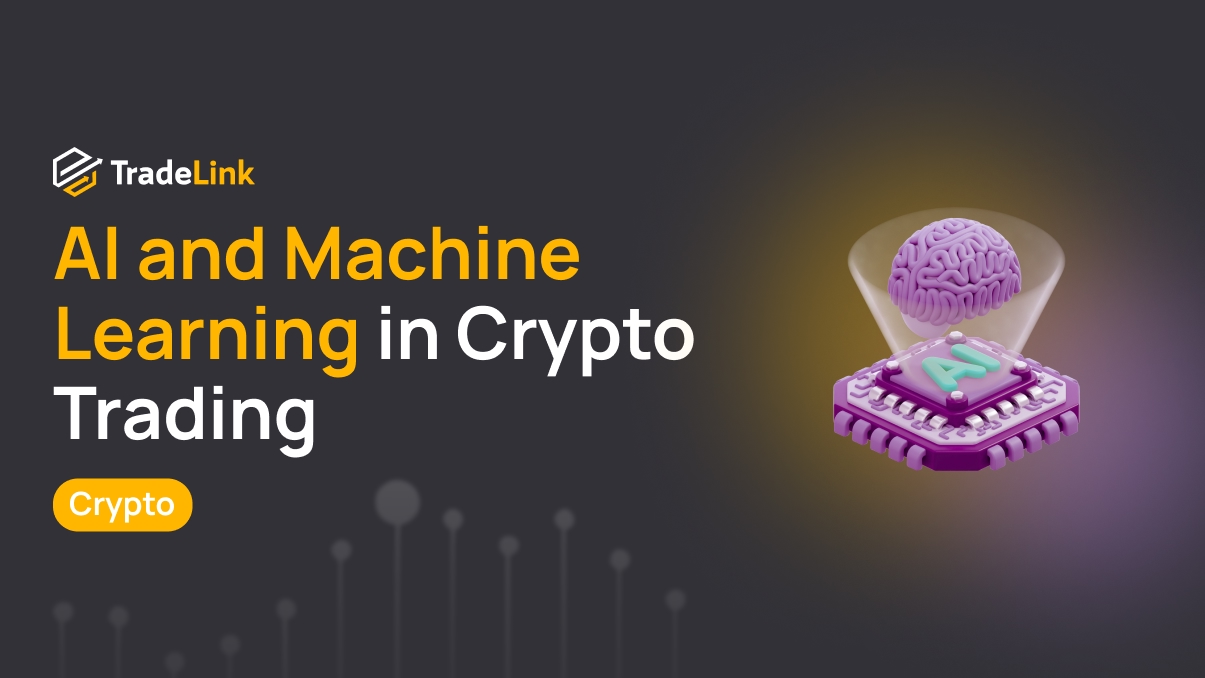
Contents
- Introduction
- What is AI in Crypto Trading
- Application of Artificial Intelligence in Trading
- Trading Automation
- Limitations and Risks of Using AI
- The Future of AI and Machine Learning in Crypto Trading
- Conclusion
Introduction
Artificial intelligence helps traders navigate the market. Systems identify connections in data and indicate where risk is higher and where the probability of profit is better. Interest in automated solutions is growing. Many want to understand how AI works in crypto trading, where it brings real value, and where it reaches its limits.
What is AI in Crypto Trading
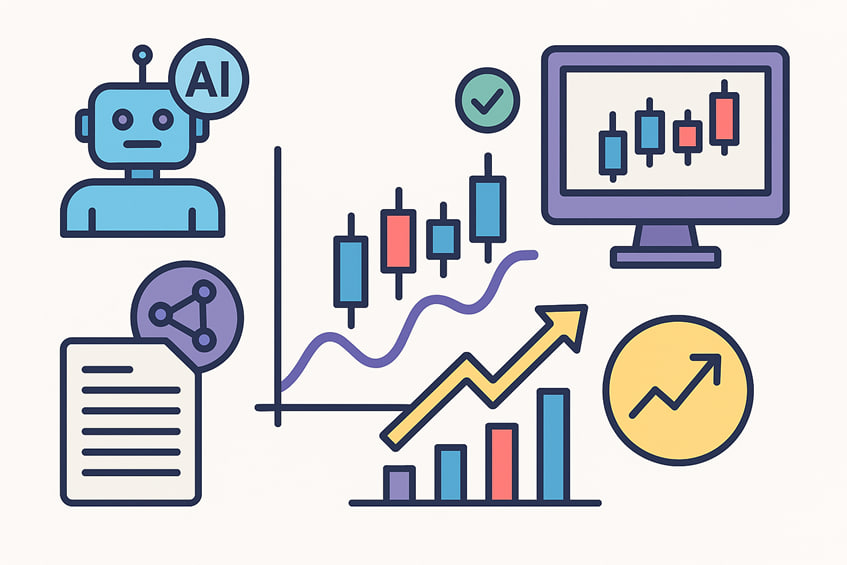
AI is a class of methods where a program not only follows rules but also learns from data. In cryptocurrency trading, AI typically refers to the application of machine learning to the trading of cryptocurrencies. A model looks at price history, volumes, order book flow, news, and network metrics, then builds a forecast or provides an assessment of movement probability.
It is important to distinguish three concepts:
-
Algorithmic trading in cryptocurrencies — a clear set of rules (for example: “if the price is above the 50-day average — buy”)
-
Trading bots — software solutions that execute these rules automatically: placing orders, moving stop-losses, controlling positions
-
AI-based systems — models that learn from examples and generate signals based on a set of features; this approach is closer to predictive analytics in crypto, and deep learning is used for specific tasks
AI is particularly helpful when simple rules are insufficient, such as during regime shifts, on noisy minute charts, or during liquidity spikes. In these cases, crypto trading with AI provides a more flexible signal.
The Difference Between AI and Classic Trading Algorithms
The classic rule-based approach works by template: there is a signal — there is an action. This method is transparent and straightforward, easy to verify, but it adapts poorly to new conditions.
AI follows a different path:
-
Learns from examples and adapts to new data
-
Identifies nonlinear relationships that do not fit into a single indicator
-
Provides probabilities rather than strict “buy/sell” commands
Example: The rule “moving averages crossover = entry” gives one answer. An AI-based model considers multiple signals, including movement speed, volume spikes, spread, and market context. The output is a scenario assessment, so the trader makes a decision taking into account this assessment and their own risk constraints.
Hence, the key difference is that a rule-based bot is predictable and rigid, while AI-based solutions are more flexible and can be more accurate in complex conditions. However, they require quality data, validation, and oversight; without this, any model will make mistakes, and the final accuracy depends on the quality of the data.
Application of Artificial Intelligence in Trading
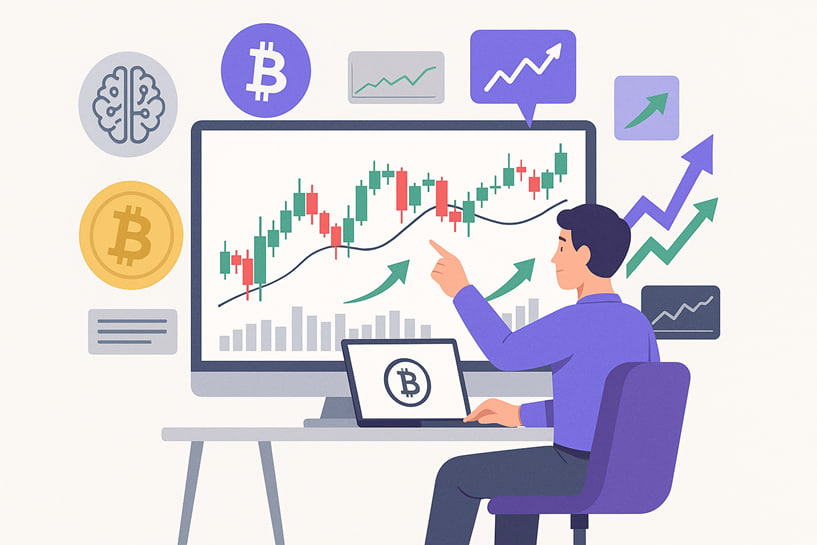
Price and Trend Forecasting
Machine learning in crypto trading helps identify patterns in market history. Algorithms analyse charts, volumes, trade frequency, news, and blockchain activity. Based on this data, they build a forecast of price movement.
For example, a model may notice that under one set of factors, Bitcoin tends to rise, while under another it tends to fall. This approach enables the detection of hidden patterns and enhances the accuracy of forecasts.
Generation of Trading Signals
AI processes large amounts of information that are difficult for humans to grasp, including news, social media, trade statistics, and market sentiment. As a result, the trader receives trading signals generated by machine learning algorithms. Such signals may include:
-
Probability of an asset’s rise or fall
-
Indicative price range
-
Trend strength assessment
-
Warning of a possible anomaly
A signal does not guarantee profit, but it helps to assess the situation more quickly and make informed decisions; the final accuracy ultimately depends on the quality of the data and the prevailing market conditions.
Risk Management
One of the most significant applications of AI is position sizing and loss mitigation. Systems analyse past trades and current dynamics and suggest what percentage of capital to allocate and where to place a stop.
It is essential to consider not only trade history but also to monitor trades in real time. This approach enables traders to understand how current decisions impact the overall picture and adjust their strategies accordingly. For this, risk management tools with up-to-date statistics are utilised, which help evaluate each portfolio movement in real-time and make decisions based on objective data rather than emotions.
Trading Automation
AI-based crypto trading bots can automate routine tasks completely. They connect to the exchange via API and execute commands without human participation. Such a bot can place orders, close trades, and adjust strategy parameters in real-time.
The advantage is a more flexible reaction to new conditions compared to rule-based systems. A classic bot acts strictly according to preset rules, while an AI-based bot can adapt to changes. This may enhance resilience in the rapidly evolving cryptocurrency market; however, the outcome depends on the quality of the data and the stability of the infrastructure.
Limitations and Risks of Using AI
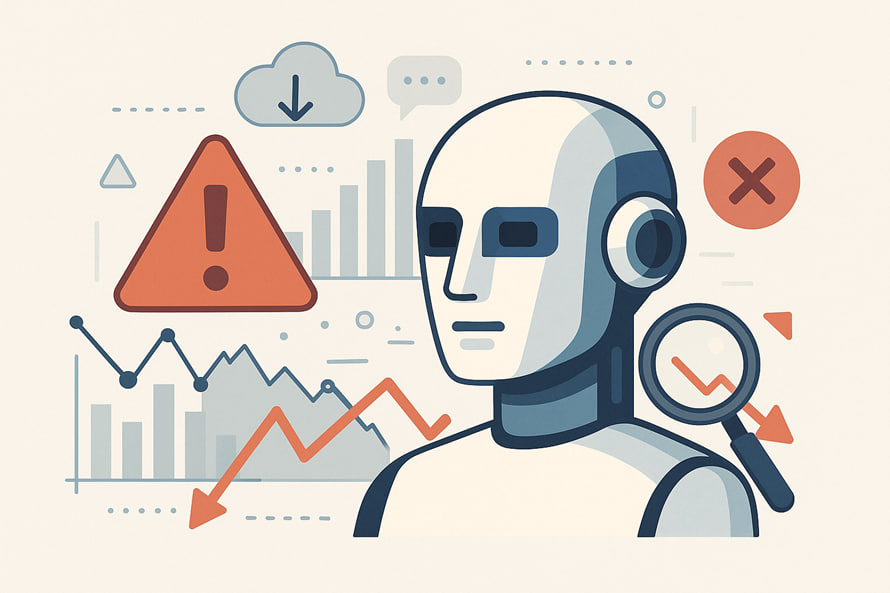
Artificial intelligence in cryptocurrency trading opens new opportunities, but it also has weaknesses. If they are taken into account in advance, the likelihood of mistakes can be reduced.
Data Quality Limitations
Any machine learning model in crypto trading depends on data. If the data is incomplete, outdated, or too noisy, forecasts become inaccurate. The cryptocurrency market is particularly complex due to high volatility and sudden news events. Even large AI systems for crypto trading make mistakes if distorted signals are used in training.
Examples of typical problems:
-
Delays in updating price data
-
Unavailability of part of the trading history
-
Noise from social networks and news channels
-
Use of unverified sources
An algorithm may interpret a random spike in news as a reliable signal and make an error. This indicates that the final accuracy depends directly on the quality of the source data.
Model Overfitting
The problem of overfitting occurs often. A model that performs perfectly under past conditions usually struggles under new ones. In cryptocurrency trading, this is especially noticeable, as the market can change direction abruptly.
Such AI shows promising results on historical data, but loses accuracy in the real market. A trader may see attractive numbers in tests, but still incur losses in real trading. To mitigate this risk, validation using independent data and regular model updates is employed. Still, artificial intelligence in crypto trading does not guarantee stability without oversight.
Technical and Infrastructure Risks
Even the best AI-based bot does not operate in a vacuum. It requires computing power, stable connections, and fast exchange through an exchange’s API. If the server slows down or the API freezes, the algorithm fails to place orders on time. Additionally, complex models require substantial resources. If there is a lack of computing power, delays affect the result. In a volatile market, even seconds can determine the outcome of a trade. Therefore, a trader must consider not only the quality of the algorithm but also the infrastructure on which it runs.
The Future of AI and Machine Learning in Crypto Trading
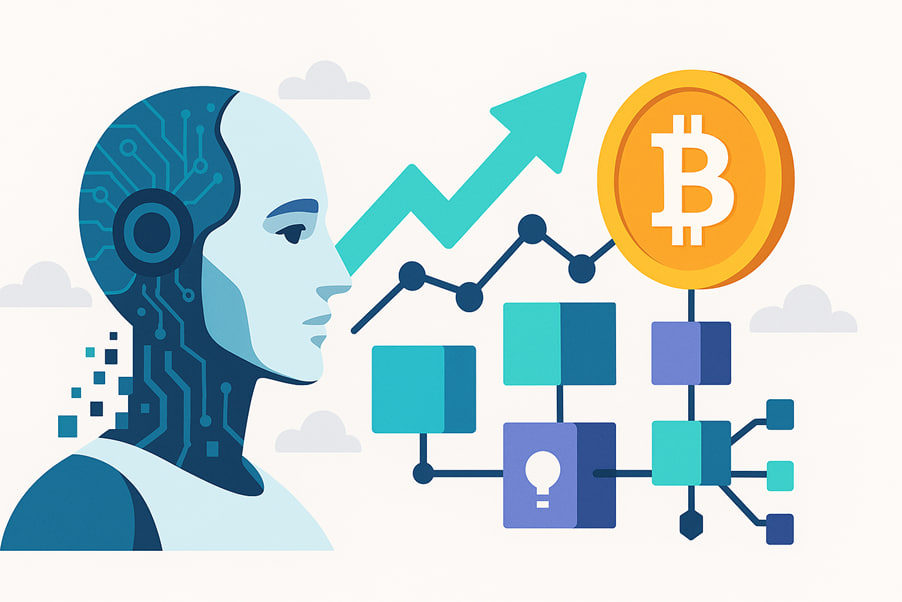
Technology is developing rapidly. It is already clear that machine learning in cryptocurrency trading will become more accurate and more accessible. New models will be able to account for more factors: not only charts and volumes but also news, user sentiment, and changes in blockchain networks.
The next step is to integrate with decentralised platforms. Algorithmic trading in cryptocurrencies will also move into the DeFi sphere, where everything operates without intermediaries. Here, AI will help manage wallets, monitor liquidity, and suggest profitable trades in real time.
A separate direction is hybrid solutions. In such setups, artificial intelligence in crypto trading takes over part of the tasks, while the trader retains control over risks and key decisions. This can reduce the trader’s workload while leaving space for experience and intuition. Such an approach appears to be the most realistic for the future.
Possible Development Directions
Direction | What Will Change | Benefit for the Trader |
Improvement of predictive models | Consideration of a greater number of factors | More accurate forecasts (depending on data quality) |
Integration with DeFi | Direct operation through smart contracts | Access to new strategies without intermediaries |
Hybrid solutions “human + AI” | A combination of trader experience and algorithm | Risk control with high automation |
Conclusion
Artificial intelligence opens new horizons for crypto traders. It helps detect patterns, build forecasts, and automate trades. However, along with advantages come risks: AI makes mistakes if the data is of poor quality or if market conditions change too sharply.
Therefore, it is essential not to rely solely on bots but to test strategies in practice. A successful trader uses AI as a tool, not as a substitute for their own experience. Caution, understanding of limitations, and discipline make working with AI in crypto trading safer and more effective.